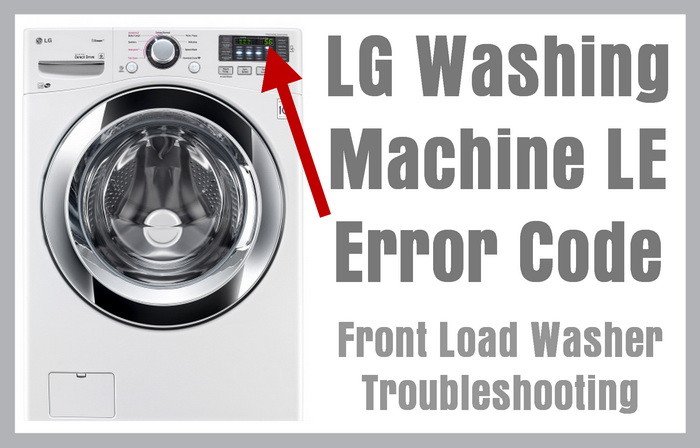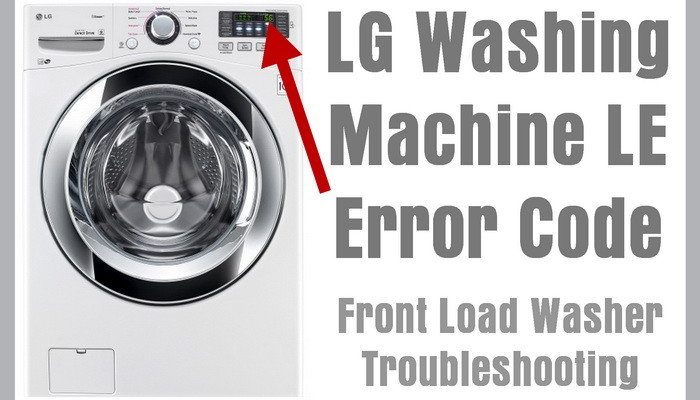
A UE error code on your GE washing machine is its way of flagging an *unbalanced load*. Essentially, your washing machine is letting you know it’s having difficulty spinning because the clothes inside are unevenly distributed. This might seem like a glitch, but it’s actually a smart protective feature. When the load is off-balance, the washing machine’s ability to spin effectively is disrupted. This can lead to excessive vibrations, potentially causing damage over time. While sometimes it’s an easy fix with a quick load adjustment, there are times when you might need a helping hand from a professional.
Understanding the UE Error Code
Let’s dive a bit deeper into what the UE code means. Imagine you’re riding a bike and suddenly start to wobble because the load in your backpack shifts to one side. That’s quite similar to what’s happening inside your washing machine. It tries to maintain balance with every spin cycle, ensuring that the drum doesn’t wobble too wildly. When the machine senses an imbalance that’s too severe to correct automatically, it signals the UE error.
But why does this happen? From bulky items like towels getting tangled to tiny laundry loads clumping together, there are numerous causes. Sometimes it’s as simple as the clothes bunching up against one side of the drum. You might also run into this problem if your washing machine isn’t leveled properly or if the drum suspension (think of it as the washing machine’s shock absorbers) isn’t functioning well.
What can you do? First, pause the machine and redistribute the laundry. Try mixing heavy and light items together, as this helps balance the load. If you’ve tried this and the UE error persists, there’s a chance something more intricate might be at play—like a problem with the drum itself or its suspension system.
When to Attempt a DIY Fix
Now, if you’re a bit of a DIY enthusiast, you might be tempted to roll up your sleeves and tackle this issue on your own. Often, you can resolve a UE error without expert help. Start by checking if the machine is on a level surface. Use a spirit level to see if it’s balanced from front to back and side to side. If it’s not, adjust the feet of your washer until it’s stable.
Take another look at your laundry. Overloading or underloading can be culprits. Aim for a medium-sized load for the best results. If your washing machine continues to act up despite these fixes, unplug it for a few minutes and then restart. This can sometimes reset the machine’s sensors.
However, if you’re repeatedly dealing with the same error, this might be your washing machine’s way of hinting at a deeper mechanical issue. In this case, while DIY might sound appealing, it’s probably time to seek professional assistance to avoid causing further damage.
Knowing When to Call a Technician
Here’s the deal: if you’ve tried your hand at these basic checks and adjustments and that stubborn UE code won’t vanish, calling a technician is a smart move. Persistent UE errors could indicate wear and tear or a problem with internal parts that require an expert touch.
Let’s face it, tackling a bouncing and rattling machine isn’t a long-term solution. A technician can diagnose issues like faulty suspension springs, drum bearings, or even motor problems. These are not the kind of repairs you’d want to tackle on your own unless you’re specifically trained to do so.
Also, consider the age of your washing machine. If it’s been serving you for a decade or more, a string of error codes could signify that it’s nearing the end of its life cycle. A technician’s visit can help determine whether it’s time for repairs or a replacement.
Preventative Tips to Avoid Future UE Errors
You might be wondering, “Can I avoid these pesky UE errors altogether?” While no washing machine is entirely error-proof, there are certainly steps you can take to minimize them. For starters, always aim to balance your loads. Mix light with heavy fabrics and avoid letting clothes get tangled up by loading them in layers, like a washing machine lasagna.
Regular maintenance is also crucial. Clean the drum and check the hoses frequently for blockages or kinks. Once a year, inspect the drum for any loose or worn components. Keep an eye on the washing machine’s feet to ensure they’re not worn or uneven.
Lastly, use the appropriate cycle for the types of clothes you’re washing. This can prevent unnecessary stress on the machine’s components. If you follow these tips, you might just save yourself from that startling UE code interruption ever again!
In conclusion, while the UE error code can be quite the head-scratcher, understanding what it means and when to call a technician can save you time and stress. With the right balance, literally, your washing routine can go back to being a smooth and quiet affair.
